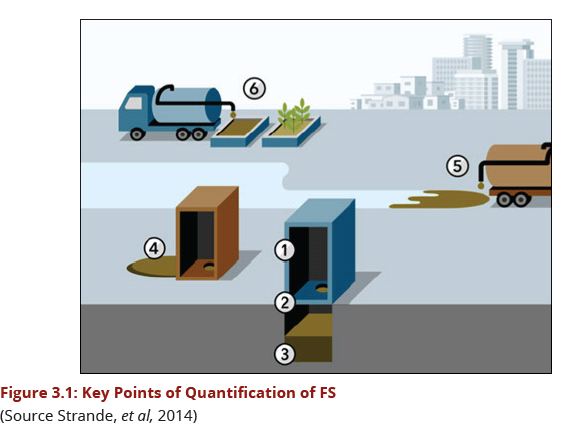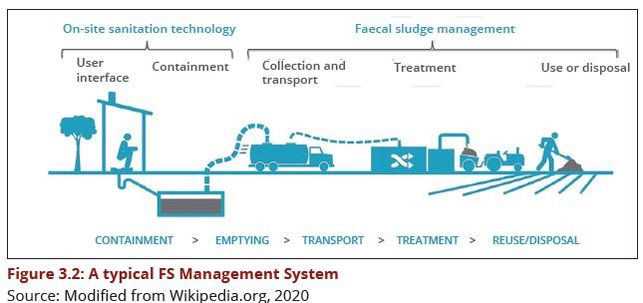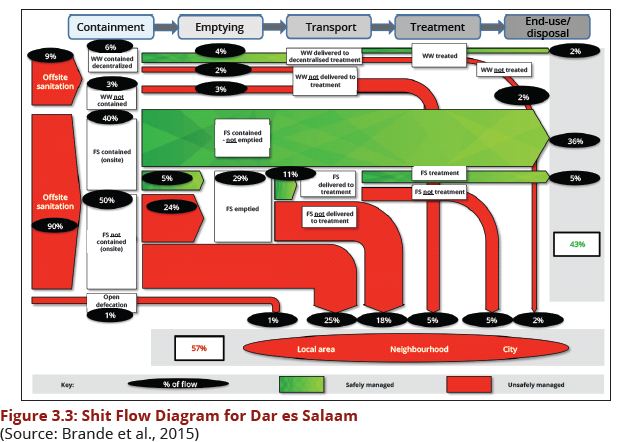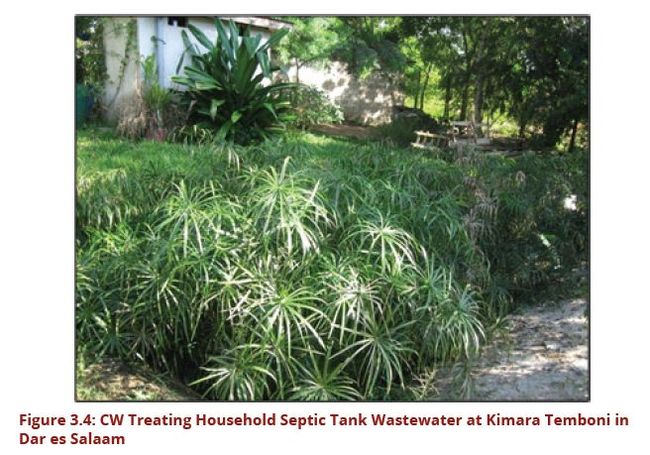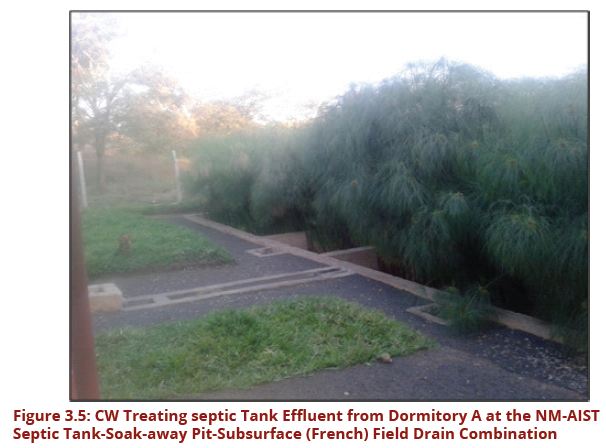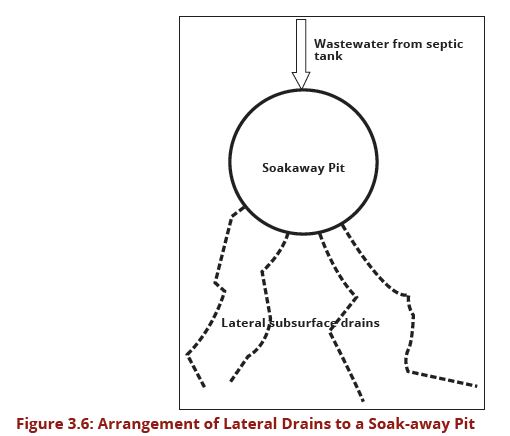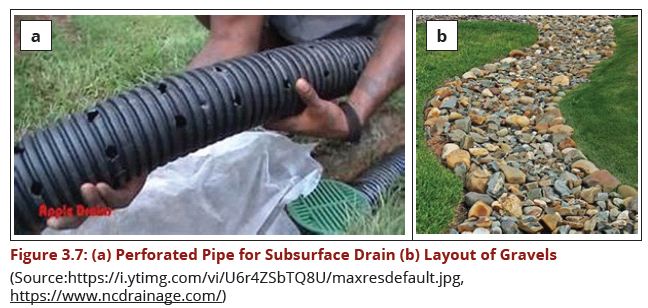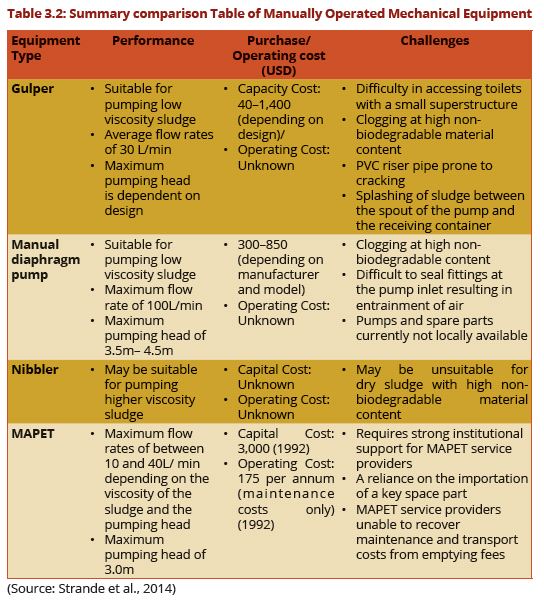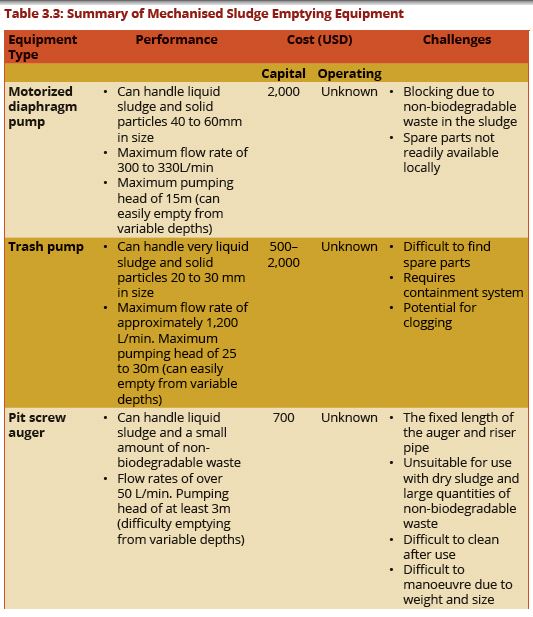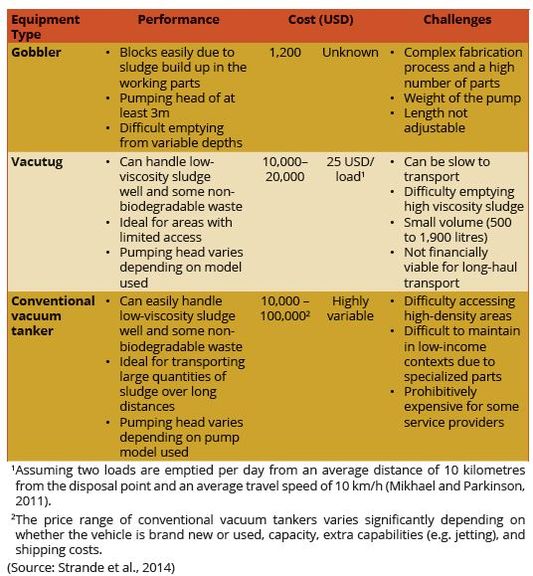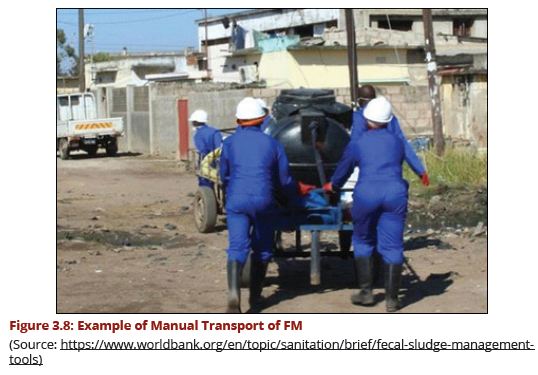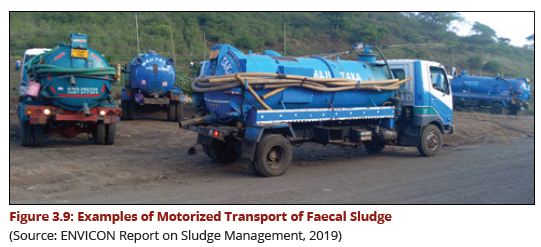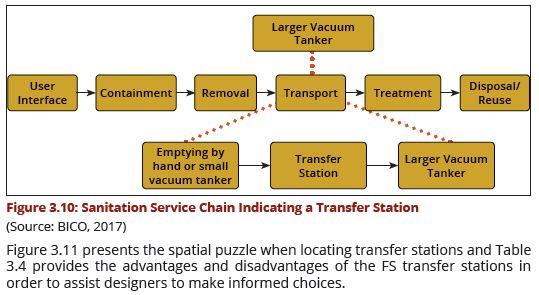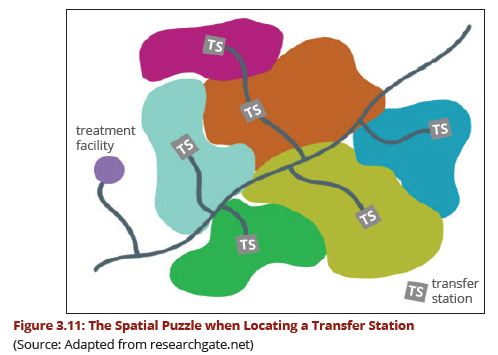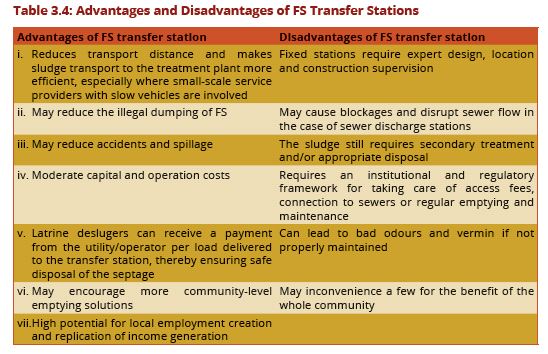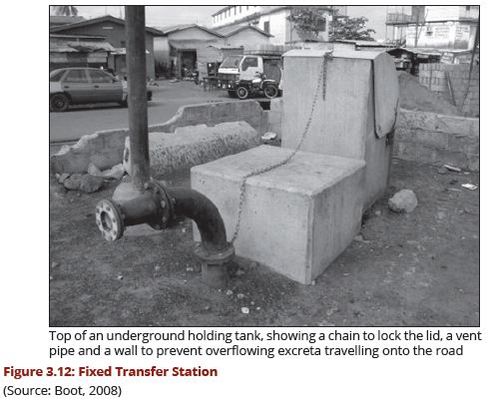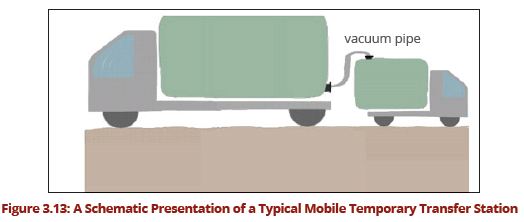Chapter Three: On-Site Sanitation Systems
Contents
- 1 Chapter Three: On-site Sanitation Systems
- 1.1 3.1 INTRODUCTION
- 1.2 3.2 FAECAL SLUDGE MANAGEMENT (FSM)
1 Chapter Three: On-site Sanitation Systems
1.1 3.1 INTRODUCTION
Sanitation refers to the prevention of people from coming into contact with wastes generated in homes, workplaces and public buildings, by providing facilities and services for the safe management of human excreta to containment and storage and treatment on-site or conveyance, treatment and eventual safe end use or disposal (https://www.who.int/topics/sanitation/en/). On the basis of the transport and treatment mode, there are two main types of sanitation systems, namely; on-site sanitation (OSS) and off-site sanitation systems. Under the off-site system, there are two sub-categories of centralized and Decentralized Wastewater Treatment (DEWAT). This manual provides guidance for the design of both types of systems. This chapter focuses on OSS.
1.2 3.2 FAECAL SLUDGE MANAGEMENT (FSM)
In Tanzania, it is estimated that about 90% of the population is served by OSS and technologies which include pit latrines, septic tanks and soak-away pits (Brande et al, 2015). These systems end up generating huge volumes of faecal sludge (FS) which accumulates in on-site sanitation management technologies.
‘Faecal Sludge (FS) is defined as the raw or partially digested, a slurry or semisolid material resulting from the collection, storage or treatment of a combinations of excreta and black water, with or without grey water. Examples of on-site sanitation technologies include pit latrines, un-sewered public ablution blocks, septic tanks, aqua privies, and dry toilets. FSM includes the storage, collection, transport, treatment and safe end-use or disposal of FS. FS is highly variable in consistency, quantity, and concentration.
Recently, FS has presented itself to be one of the major sanitation management challenges in urban areas of Tanzania. This calls for adequate and appropriate FSM.
To better address FSM challenges, it is important to consider FSM as a sanitation service delivery chain. In a developing country settings FSM refers to organized programmes that provide safe and hygienic septic tank and pit latrine emptying services, along with the proper treatment of liquids and re-use of related bio-solids where possible. Adequate and proper FSM follows a ‘service chain’ approach. The service chain includes the collection, storage, transport, treatment and safe enduse or disposal of FS. FS quantity which is an important element in design of FS treatment facility is determined as depicted on Figure 3.1.
The complete sanitation service chain is shown in Figure 3.2. The FSM component is specifically the emptying, collection, transport, treatment and end-use or disposal of FS. This design manual provides a framework for the design of sanitation systems in all its components of sanitation service delivery chain.
1.2.1 3.2.1 Quantification of FS
Deriving accurate estimates for the volume of FS produced in an area is essential for the proper sizing of infrastructure required for the relevant collection and transport networks, discharge sites, treatment plants, and end-use or disposal options. The first step in designing FS (FS) treatment technologies that will meet defined treatment objectives. This will quantify and characterise the FS to be treated. Ideally, this should be carried out as part of the feasibility study.
Accurate estimate of FS volume is crucial for the appropriate sizing of collection
and transport systems, treatment facilities, discharging sites and disposal
options. While methods for quantification of FS are still being evaluated globally,
the following key points have been applied in the quantification of FS:
(a) The amount of excreta going into the toilet depending on how many people
eat and excrete in a location,
(b) How much FS is produced in addition to toilet paper and flush water to the
previous number,
(c) The amount of FS accumulated by balancing accumulation and degradation
(currently it is done empirically),
(d) The amount emptied from the containment,
(e) The amount that is illegally discharged,
(f) The actual amount delivered to the treatment plant
Additionally, Figure 3.1 should be used together with the shit flow diagram
presented in Figure 3.3 to estimate the quantity of FS.
Due to the variability of FS volumes generated, it is important to make estimates based on the requirements specifically for each location and not to estimate values based on literature. For example, from the FS quantification diagram, bullet six will be obtained from the number of trucks and their capacity. Then from the shit flow diagram, this amount is equal to 11%. So, the total quantity of FS generated is (quantity at point 6/0.11).
However, no proven methods exist for quantifying the production of FS in urban areas, and the data collection required in order to accurately quantify FS volumes would be too labour intensive, especially in areas where there is no existing information.
1.2.2 3.2.2 Characterization of FS
The parameters that should be considered for the characterisation of FS include Solids - Total Solids (TS), Total Volatile Solids (TVS) and Total Suspended Solids (TSS) concentration, Chemical Oxygen Demand (COD), Biochemical Oxygen Demand (BOD), Nutrients, Pathogens and metals. These parameters are the same as those considered for domestic wastewater analysis. However, it needs to be emphasised that the characteristics of domestic wastewater and FS are very different. In the absence of the specific standards for FS analysis, the Standard
methods for the analysis of water and wastewater as provided for by APHA, 2012 should be used.
Table 3.1 presents examples from literature illustrating the high variability of FS characteristics and provide a comparison with sludge from a wastewater treatment plant.
The organic matter, total solids, ammonium, and helminth eggs concentrations in FS are typically higher by a factor of ten or a hundred compared to wastewater sludge (Montangero and Strauss, 2002).There is currently a lack of detailed information on the characteristics of FS. However, research continues to be actively conducted in this field. Research results, together with empirical observations, will continue to increase the knowledge of FS characteristics, and allow more accurate predictions of FS characteristics using less labour intensive methods.
1.2.3 3.2.3 Design Considerations for Capture and Containment
1.2.3.1 3.2.3.1 Pit latrines, Septic Tank-Soak-away Pit Systems
Containment for On-site systems can be Pit Latrines of different kinds (simple or traditional pit latrine, improved pit latrines, pour flush or eco-san. A pit latrines can be a stand-alone or combined with a septic tank, soak-away pit. For hygiene
reasons Tanzania encourages the use of improved pit latrines while recognising that many people in rural and peri-urban areas use traditional pit latrines. The most common type of on-site sanitation system in urban and peri-urban areas is flush toilet-septic tank-soak-away pit combination. The Ministry responsible for Health has prepared guidelines for the planning and implementation of improved pit latrines, septic tank and pit systems for individual households, community level, institutions and for disaster situations. This document titled “MWONGOZO WA UJENZI WA VYOO BORA NA USAFI WA MAZINGIRA” should be referred to for guidance whenever on-site sanitation composed of any of the aforementioned systems is concerned. The Ministry of Health Guidelines for Improved Latrines and Environmental Sanitation should be widely disseminated and used by LGAs in ensuring that the Guidelines are used. The link to the document can be found at http://www.moh.go.tz/en/enviromental-health.
1.2.3.2 3.2.3.2 On-site Systems for Areas of High Water Table and Soils of Low Permeability (e.g. Clay Soils)
Pit latrines and septic tank, soak-away pit systems described in 3.2.3.1 can be implemented in areas of low water table and soils of moderate to high permeability in order to allow for the necessary treatment to occur. In areas of high water table, latrines and soak-away pits tend to overflow during rainy seasons and may require frequent emptying which can be very expensive. There is also concern over public health regarding sewage running freely in the environment. It is recommended that for such areas septic tanks or latrines should be combined with technologies such as constructed wetlands (CW) or subsurface drains. For areas of low permeability it is recommended to use lateral subsurface drain connected to the soak-away pit.
Combined Septic Tank and Constructed Wetland system Figure 3.4 and Figure 3.5 show household and institutional systems of septic tank-constructed wetland (CW) combination applied to an area of clay soil and high water table, respectively. The design of CW is explained in section 4.2.4.4.1 of this manual.
When infiltration from a soak-away pit is a problem due to low permeability of the soils, increasing the area of infiltration by introducing lateral subsurface drains also commonly known as French drains to the soak-away pit can be applied (Figure 3.6). Subsurface drains involve excavating a trench and placing a perforated pipe and coarse material such as gravel in the trench (Figure 3.7). The lateral drains should follow the sloping of the land for easy draining.
1.2.4 3.2.4 Design Considerations for Emptying/Desludging
Wastewater collection technologies can in general, be categorized into either manually operated or mechanical collection technologies. Emptying services in low and middle-income countries are frequently a mix of mechanical tools and manual workforce.
1.2.4.1 3.2.4.1 Manually Operated Mechanical Emptying/Desludging
Recent innovations in human powered mechanical devices are assisting service providers in servicing septic tanks and pit latrines more quickly, safely and efficiently. There are four (4) common types of mechanical pumping equipment that have been developed and tried; namely, the Sludge Gulper, the diaphragm pump, the Nibbler, and the Manual Pit Emptying Technology (MAPET).A designer of manually operated mechanical collection is advised to refer to Table 3.2, taking into consideration the characteristics of FS presented in Table 3.1.
1.2.4.2 3.2.4.2 Fully Mechanized Emptying/Desludging
Fully mechanized technologies are powered by electricity, fuel or pneumatic systems. They can be mounted on a frame or trolley for increased mobility, or mounted on vehicles for emptying and transporting large quantities of sludge over longer distances. A designer is guided to choose any the presented methods in the Table 3.3.
1.2.5 3.2.5 Faecal Sludge Transport Technologies
There are two types of FS transport technologies, namely manual and mechanical
transport. The type of transport technology to be opted may be guided by a
number of aspects including:
(a) the type of vehicle to be used including its road worthiness, maintenance
condition, licenses and permits, and where it is kept when it is not in service;
(b) the type of sludge removal equipment, including hoses, pumps, augers, and
other tools of the trade;
(c) the spill management equipment to be used including shovels, disinfectants,
sorbents, and collection bags;
(d) the skills of the operator including training and certifications that might be
required to perform the work;
(e) procedures that need to be followed including rules of the road and activities
at the treatment plant and
(f) other aspects such as the use of transfer stations, worker’s health and safety,
and emerging technologies.
1.2.5.1 3.2.5.1 Manual Transport
Today, both standard carts used for general transport of materials, as well as customized carts designed specifically for transport of FS, can be found in many low-income countries, an example of which is shown in Figure 3.8.
1.2.5.2 3.2.5.2 Motorized Transport
Motorized transport equipment (Figure 3.9) offers the potential for larger load capacities and increased speed, leading to reduced travel times and a greater range compared to manual transport. The operation and maintenance of motorized transport is generally more complex than that of manual transport. However many variations are widely used in low-income countries. Before selecting the type of transport system to use, it is important to verify that the knowledge and skills to carry out repairs are locally available.
1.2.6 3.2.6 Transfer Stations
It has been observed that distances from the emptied OSS to a regulated disposal facility of greater than 5km often result in illegal dumping of sewage in creeks and rivers (Kone & Peter 2014). This illegal practice has obvious health and environmental hazards resulting from contamination of water and attraction of vermin and flies. In order for operators to get enough trips done in a day, while keeping the service affordable, installation of FS transfer stations at a close proximity to densely populated areas is essential. This approach creates a twostep process for handling the waste matter (SSWM, 2014). Figure 3.10 indicates a sanitation service chain of a transfer station Sanitation.
1.2.6.1 3.2.6.1 Fixed Transfer Stations
Fixed transfer stations can be divided into four main categories, the first of which include ‘permanent storage tanks constructed as vault-like concrete structures. These tanks are designed to provide storage capacity for FS over a short period of time when there is no capacity for treatment. An example of such tanks are the underground holding tank (UHT) reported by Boot (2007) in Accra, Ghana. With capacities of approximately 23 m3, the UHTs were designed to provide access to pan latrine collectors (primary transport) and vacuum trucks (secondary transport). Care must be taken to ensure that FS is NOT stored over long periods as it may cause transport operational challenges due to settling of sludge.
The fixed transfer station essentially serves the role of a secure, safe, storage facility and can be designed according to the type of containers used. For example, in one project in Ghana a concrete-lined pit within a fenced compound was used to store the containers in order to avoid tampering, flooding or spillage. Once full the IBCs are emptied with a vacuum truck. Figure 3.12 presents an example of a fixed transfer station showing the top of an underground holding tank, a chain to lock the lid, a vent pipe and a wall to prevent overflowing of excreta travelling onto the road.
1.2.6.2 3.2.6.2 Mobile Transfer Stations
Mobile transfer stations consist of easily transportable containers providing temporary storage capacity at any point near the structure being emptiedessentially a tank fitted on a wheeled chassis. Examples of such transfer stations include motorised collection vehicles, or tanker trailers pulled via a truck or tractor. Figure 3.13indicates a schematic presentation of a typical mobile transfer station.
